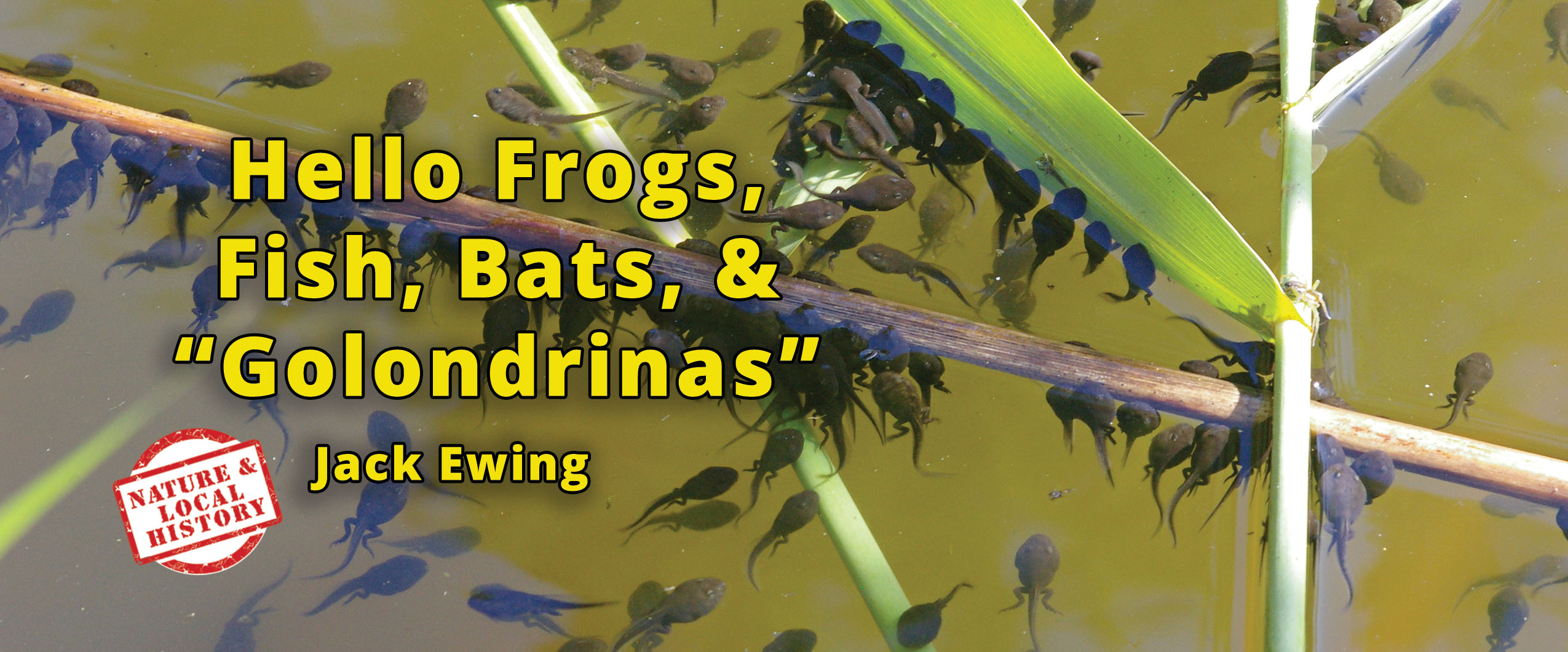Hello Frogs, Fish, Bats, & “Golondrinas” – Jack Ewing
Bye-Bye Mosquitos
Many years ago, before we had electricity, I had a small fish tank. I couldn’t use an air pump to oxygenate the water, so I had to struggle to keep everything in balance as best I could. Fish need oxygen, which is produced by green plants, which need nutrients, which are provided by fish feces, which comes from fish that eat everything from green plants and fish food to mosquito larvae. If you feed the fish too much, the excess food will lie on the bottom of the aquarium and decompose, a process which depletes the oxygen. You need just the right amount of each thing, fish, plants, and fish food. Snails are important too. They clean the algae off the glass. My fish were common guppies. A couple of tiny tree frogs also found the tank to their liking and added their presence to the mix. Plants, water, and mosquitos. What else could a frog want. This added a new twist to the balancing of the tank. Guppies like frog eggs and tadpoles, and tadpoles eat mosquito eggs, larva, and pupae. Is it any wonder that I failed to create a perfectly balanced aquarium and had to empty it out and start over a couple of times? It was quite a challenge which I never got exactly right, but I learned a lot about nature and especially about the dynamics of aquatic ecosystems.
 That fish tank was the beginning of my understanding of mosquitos. After 53 years of living in the tropics, where mosquitos thrive, I’ve learned a lot. When Hacienda Barú was engaged in rice farming we had hordes of mosquitos. I remember one night when I had to wear a jacket, leather shoes and gloves, lather my face with repellent, and sleep under a mosquito net to keep from being ravaged. When we quit farming rice, and spraying insecticides all over the fields, the mosquitos diminished. In addition to the insects that damage rice, the insecticides kill a lot of other things, some of which prey on mosquitos, including dragonflies, spiders, frogs, geckos, and fish.
That fish tank was the beginning of my understanding of mosquitos. After 53 years of living in the tropics, where mosquitos thrive, I’ve learned a lot. When Hacienda Barú was engaged in rice farming we had hordes of mosquitos. I remember one night when I had to wear a jacket, leather shoes and gloves, lather my face with repellent, and sleep under a mosquito net to keep from being ravaged. When we quit farming rice, and spraying insecticides all over the fields, the mosquitos diminished. In addition to the insects that damage rice, the insecticides kill a lot of other things, some of which prey on mosquitos, including dragonflies, spiders, frogs, geckos, and fish.
It has been 39 years since we cultivated rice and sprayed insecticides. The natural enemies of the mosquitos have been back in force for quite a while, and I no longer need my leather clothing, mosquito netting, and repellent. Occasionally in the early evening when there are a few mosquitos we get out our favorite incense. It doesn’t seem to matter what kind. Any kind of incense will send them packing.
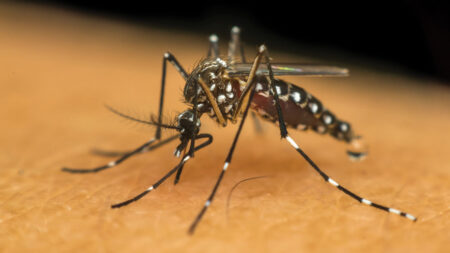 During the dry season there are no puddles for mosquitos to breed in, so we are free of their annoying stings. The rains don’t come all at once. A good rain may be followed by four of five dry days. After a strong shower puddles form, and mosquitos have a place to breed. The next good rain washes away the puddles along with all the eggs, larvae, and pupae, and we have a day or two of respite. It is during this transition period from dry to wet that we have quite a few mosquitos. Steady rain replaces puddles with flowing water, which carries away the eggs, larva, and pupae and allows small fish to swim upstream in the creeks, canals, and ditches that have been dry for the last several months. With the steady rains, the evenings are filled with the melodious croaking of multitudes of frogs welcoming in the change of season. Once the daily rains begin, the mosquito population diminishes to a tolerable level.
During the dry season there are no puddles for mosquitos to breed in, so we are free of their annoying stings. The rains don’t come all at once. A good rain may be followed by four of five dry days. After a strong shower puddles form, and mosquitos have a place to breed. The next good rain washes away the puddles along with all the eggs, larvae, and pupae, and we have a day or two of respite. It is during this transition period from dry to wet that we have quite a few mosquitos. Steady rain replaces puddles with flowing water, which carries away the eggs, larva, and pupae and allows small fish to swim upstream in the creeks, canals, and ditches that have been dry for the last several months. With the steady rains, the evenings are filled with the melodious croaking of multitudes of frogs welcoming in the change of season. Once the daily rains begin, the mosquito population diminishes to a tolerable level.
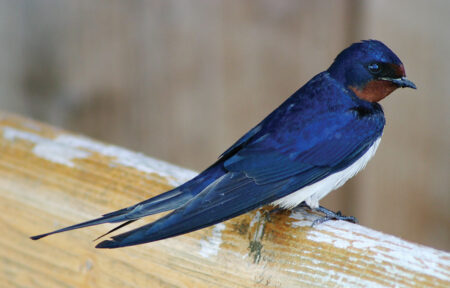 There is an old saying in rural Costa Rica that you know the rainy season is here to stay when the “golondrinas”—swifts and swallows—arrive. When I see a large flock of sleek, fast-moving birds diving and swooping in the open areas around our house I feel like shouting “Welcome back golondrinas, bye-bye mosquitos”. You can figure that one swift or swallow will consume between 500 and 1000 mosquitos per day and they come in vast flocks that quickly decimate the blood-sucking, disease-carrying little devils.
There is an old saying in rural Costa Rica that you know the rainy season is here to stay when the “golondrinas”—swifts and swallows—arrive. When I see a large flock of sleek, fast-moving birds diving and swooping in the open areas around our house I feel like shouting “Welcome back golondrinas, bye-bye mosquitos”. You can figure that one swift or swallow will consume between 500 and 1000 mosquitos per day and they come in vast flocks that quickly decimate the blood-sucking, disease-carrying little devils.
Be kind to your bats. On Hacienda Barú researchers have identified 38 species of bats—eight of which eat insects exclusively. Every individual of each of these species can eat around 1000 mosquitos a night. We have always had bats in our attic and have always treated them well. If it means less mosquitos, I can put up with a few scratching sounds in the evening and having to clean up the guano once or twice a year. It makes great fertilizer for our garden.
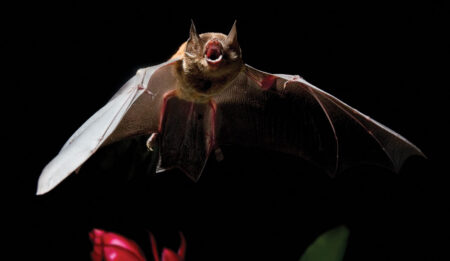 Spider webs can be annoying to home residents, but to mosquitos they are deadly, and for spiders mosquitos are nutritious. If you think you can live with a spider web here or there in your home, leave them be. Geckos—those little lizards that walk on the ceiling and go “chrit, chrit, chrit”—can also be a little annoying, like pooping on the dining room table once-in-a-while or even in your coffee, but they love to chow down on mosquitos. I do daily exercises to strengthen the muscles that support my creaky old spine. My mats are on the attic floor, and most of my exercises are done lying on my back looking up at the ceiling where the geckos hang out. When two or three of them race toward the same point you can bet it’s an insect and more than likely a mosquito, and one of them usually gets there in time to catch and eat it. Of course, they don’t eat hundreds daily like the swifts, swallows, and bats, but every little bit helps.
Spider webs can be annoying to home residents, but to mosquitos they are deadly, and for spiders mosquitos are nutritious. If you think you can live with a spider web here or there in your home, leave them be. Geckos—those little lizards that walk on the ceiling and go “chrit, chrit, chrit”—can also be a little annoying, like pooping on the dining room table once-in-a-while or even in your coffee, but they love to chow down on mosquitos. I do daily exercises to strengthen the muscles that support my creaky old spine. My mats are on the attic floor, and most of my exercises are done lying on my back looking up at the ceiling where the geckos hang out. When two or three of them race toward the same point you can bet it’s an insect and more than likely a mosquito, and one of them usually gets there in time to catch and eat it. Of course, they don’t eat hundreds daily like the swifts, swallows, and bats, but every little bit helps.
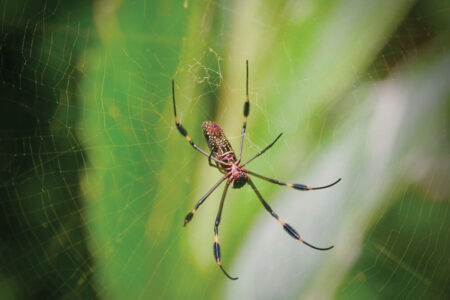 Mother Nature is infinitely complicated. Renowned ecologist, biologist, entomologist, and author, the late Dr. Edward O. Wilson, in his classical book The Diversity of Life, coined the term “Dynamic Equilibrium” when referring to an island ecosystem that was totally destroyed and then restored to lush tropical forest by natural processes. To me the term feels right when applied to the interaction of living things in a healthy ecosystem like we have just been discussing. All living beings are in a constant state of change while, at the same time, in a state of equilibrium with each other. Let Mother Nature handle it, or maybe I should say, “Don’t mess with Mother Nature”. She can fix what we mess up, but we must leave her alone so she can do what needs to be done.
Mother Nature is infinitely complicated. Renowned ecologist, biologist, entomologist, and author, the late Dr. Edward O. Wilson, in his classical book The Diversity of Life, coined the term “Dynamic Equilibrium” when referring to an island ecosystem that was totally destroyed and then restored to lush tropical forest by natural processes. To me the term feels right when applied to the interaction of living things in a healthy ecosystem like we have just been discussing. All living beings are in a constant state of change while, at the same time, in a state of equilibrium with each other. Let Mother Nature handle it, or maybe I should say, “Don’t mess with Mother Nature”. She can fix what we mess up, but we must leave her alone so she can do what needs to be done.

